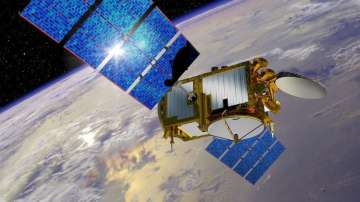An Indian researcher in Israel has designed a novel telescope system -- consisting of nanosatellites the size of milk cartons -- that can lead to low-cost, high-resolution images taken by cameras in space.
The resolution of imaging by space and Earth-based telescopes is often limited by the finite aperture of the optical systems.
The new technology could revolutionise the economics and imagery available from space-based cameras and even Earth-based telescopes, said Angika Bulbul, a PhD candidate at Ben-Gurion University (BGU).
"This is an invention that completely changes the costs of space exploration, astronomy, aerial photography, and more," said Bulbul, who hails from Bhagalpur in Bihar.
"Our system is only 0.5 per cent of the total area of the existing telescopic system, using advanced technique," she told PTI.
The research, published in the journal Optica, demonstrates that nanosatellites the size of milk cartons arranged in a spherical configuration were able to capture images that match the resolution of the full-frame, lens-based or concave mirror systems used on today's telescopes.
"Several previous assumptions about long-range photography were incorrect," said Bulbul, who worked under the supervision of Professor Joseph Rosen in the BGU Department of Electrical and Computer Engineering.
"We found that you only need a small part of a telescope lens to obtain quality images. Even by using the perimeter aperture of a lens, as low as 0.43 per cent, we managed to obtain similar image resolution compared to the full aperture area of mirror or lens-based imaging systems," said Bulbul, an alumna of National Institute of Technology (NIT) Calicut, and the Indian Institute of Technology (IIT) Delhi.
"Consequently, we can slash the huge cost, time and material needed for gigantic traditional optical space telescopes with large curved mirrors," she said.
To demonstrate the synthetic marginal aperture with revolving telescopes (SMART) system capabilities, the research team built a miniature laboratory model with a circular array of sub-apertures to study the image resolution and compare them with full lens imagery.
The proposed optical configuration is inspired by a setup in which two synchronised satellites move only along the boundary of the synthetic aperture and capture a few light patterns from the observed scene.
The light reflected from the two satellites interferes with an image sensor located in a third satellite.
The sum of the entire interfering patterns is processed to yield the image of the scene with a quality comparable to an image obtained from the complete synthetic aperture.
"In the new work, we are trying to improve the power efficiency of our telescopic system because as we know all the telescope receives very few lights from astronomical bodies resulting in low signal to noise ratio (SNR), for better reconstruction of the image we are working on the improvement of power efficiency," Bulbul said.
She said the team has filed a patent for the technology, however, there is a long way to go to realise it for actual astronomical purpose.
ALSO READ | Satellites to detect stranded whales from space
ALSO READ | Mars once had salt lakes similar to those on Earth: Study
